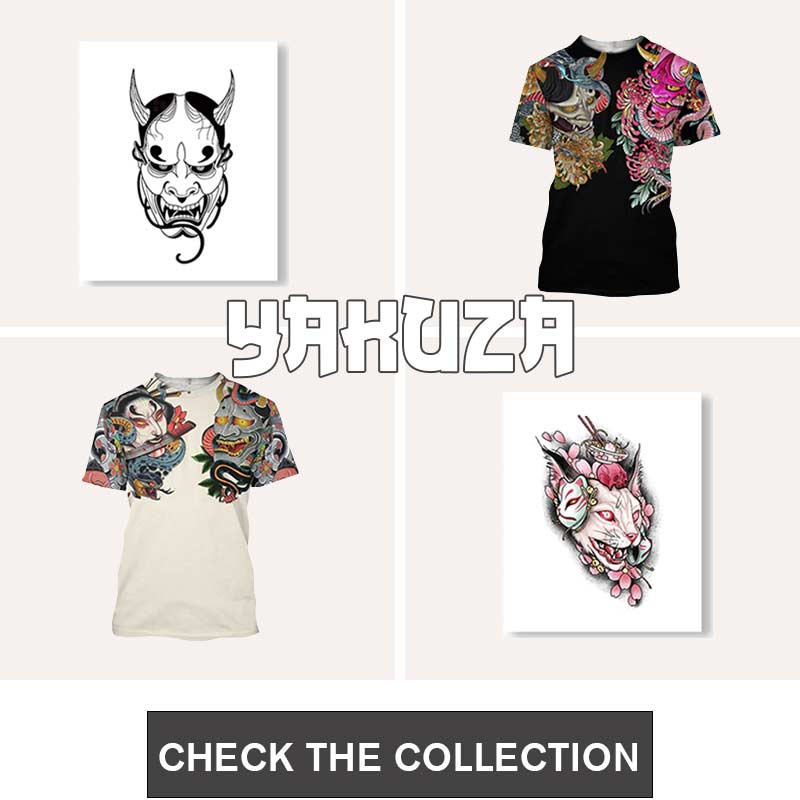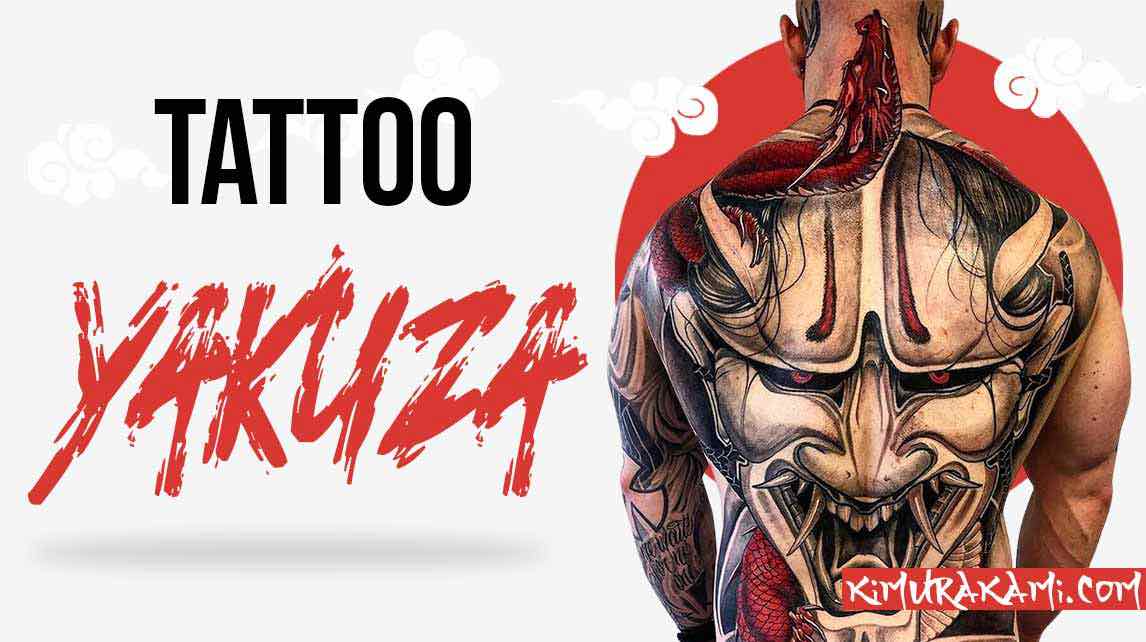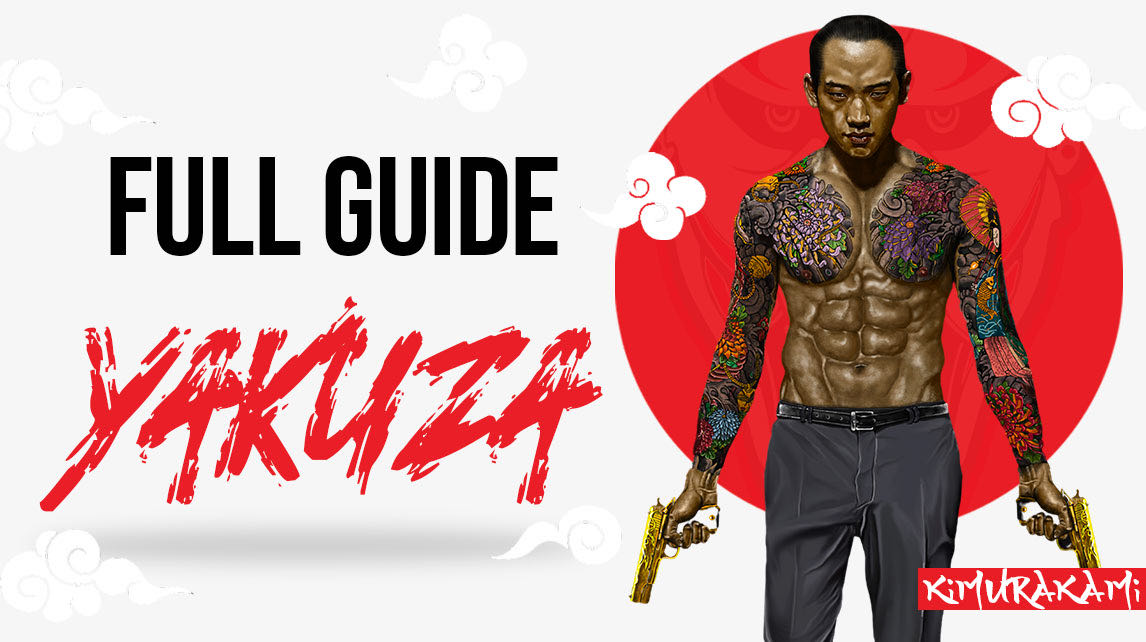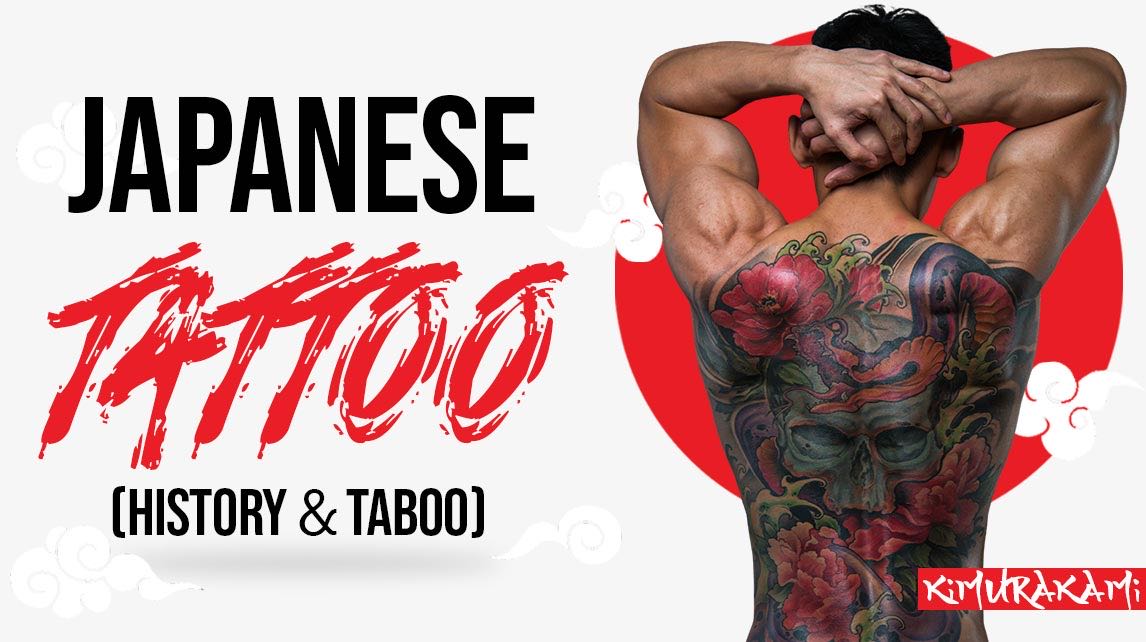Loyalty, courage, dedication, justice, honor, tattoos stem from a highly codified art that is an integral part of Japanese culture. Find the history of tattooing Yakuza.
But first, let's look at the history of the Yakuza mafia. And let's find out together why these inhabitants of the rising sun mark their bodies with the ink of the needles and bamboo of the Irezumi tattoo artists?
Who are the Yakuza, the Japanese mafia?
The Yakuza are a collection of Japanese mafia groups, whose history dates back to at least the Edo period. Like most gangs found all over the planet, the Yakuza live a life of crime. Racketeering, underground gambling, arms dealing and the like are their daily lives.
Like many gangs in the United States, the Yakuza have developed their own style of tattooing. A unique style, which can be found both within the Japanese underworld but also internationally and in the West...
As for the origin of the Yakuza, it is a bit unclear. Originally, Japanese gangsters originated from groups of gamblers, bettors or swindlers, who fought against the government during the Edo era.
The etymology of the Yakuza is a bit vague. This word "Yakuza" comes from the name of a bad hand in a card game played by these criminal groups and members of the lower Japanese castes. The term also refers to their (often very lowly) social classes and how badly they were treated in life.
 Yakuza full body tattoo wearing a fundoshi
Yakuza full body tattoo wearing a fundoshi
Nowadays, it is not easy to tell the difference between a Japanese businessman and a Yakuza. Indeed, the latter often wear suits like ordinary businessmen. They have offices, headquarters and business cards. They have even diversified their assets and expanded into the financial world.
However, you will never see their tattoos. That's right, they cover their tattoos with their clothes because this body art is very frowned upon in the land of the rising sun. Because the art of body tattooing is immediately associated with members of a Yakuza clan. For example, some Onsen prohibit tattooed people in their facilities.
What is a Yakuza tattoo?
 Yakuza tattoo
Yakuza tattoo
Yakuza tattoos are specific to each member of the Japanese mafia. They represent what the person wants to show the world. For example, Yakuza samurai tattoos are very popular because they show that the individual is a warrior at heart, who does not let fear alter his choices.
This Japanese style of tattooing usually covers the entire body, from the shoulders to the legs. The vast majority of these tattoos focus on Shinto mythology and Yakuza history. One of the sources of inspiration for this highly codified art, are the ancient woodcuts dating back hundreds of years, which have always served as the basis of inspiration for the colorful tattoos.
At the time, the tattoo artist was often the woodcut artist himself and used the same techniques used for woodcut art. The artist would begin by carving designs into the client's skin using Nara ink (Nara being the area where the famous ink stick originated).
This ink has a peculiarity: it turns a blue-green color when it is under the skin. The dragons, tigers and flowers, used for Yakuza tattoos come from a story/novel called Suikoden.
Also, the Yakuza believed that the stronger the pain the higher the member's commitment to the group and the cause. This is one of the reasons why Yakuza tattoos cover the entire body. The Yakuza tattoo is a very popular way to show off your skills.
The Yakuza tattoo is a real ritual. They would even ask people to watch them get tattooed, as a witness to their commitment (like a wedding witness). Afterwards, they would display their artwork only to other members of the various Yakuza clans.
The Yakuza tattoo and its history
 Traditional Japanese tattoo
Traditional Japanese tattoo
In Japan, there was a strict caste system enforced by the shogun who suppressed those of the burakumin (Meaning "hamlet/village people") class the most. Some of them were criminals, while others worked at jobs that no one wanted to do in Japanese society at the time. They faced extreme discrimination from the government and upper class. They were forced to work in the streets of the city.
They were forced to stick together to survive. That is why the family spirit is very present in these mafia groups. In the middle of the Edo period of Japanese history (1603-1868), there were two main burakumin groups, both of lower rank in society, which later formed the basis of the early Yakuza.
The tekiya were a group that stole or swindled goods and sold them, and the bakuto (hanafuda players) operated illegal gambling operations. From bakuto came the tradition of cutting off the first joint of the little finger to punish a group member for doing something wrong. This was done to instill fear and loyalty to the boss.
Also, if a Yakuza member wanted to leave the gang for any reason, they would lose their little finger and thus would still be considered a former Yakuza. During this time, people from the lower castes of society were developing their own tattoos, called irezumi. These are the basis of Japanese decorative tattoos.
These groups used punitive tattoos affixed to the forehead (intended for outlaws), and created a new tattoo... These tattoos of criminals were placed in visible places so that each criminal, would not find work and would be on the bangs of society as much as possible. The objective was that they could no longer escape their social rank... At that time, the Yakuza was becoming a well-known group and tattoos were banned in Japan and only criminals or outlaws had tattoos.
The Japanese culture Yakuza grew to enormous proportions despite the repressions, and they existed in hiding, tattooing and learning to live better in a society that did not put them in its good graces.
The Irezumi tattoo: a stigmatized traditional Japanese art
 Oni tattoo
Oni tattoo
Many people from the merchant class, dockworkers, construction workers, and anyone working in a difficult field began getting tattoos in Japan when the Yakuza were first formed.
To learn even more about the meaning of Japanese tattoos, we've put together a comprehensive guide with the meaning of over 30 tattoo irezumi... You will discover the meaning of Kitsune tattoo, Kirin tattoo or even the meaning of Japanese demon tattoo...
However, there was still a lot of stigma against it as it was still considered a label for criminals and an act against the beliefs of Confucianism. In late 1948, the ban on tattoos was lifted in Japan. It is common to get a tattoo on an upper limb (torso, shoulders, back, chest) so that they are not visible with short sleeves. Tattooed yakuza avoid tattooing their forearms or the center of the chest. Tattoos are still highly stigmatized in Japanese society.
Even today, many Japanese companies still discriminate against anyone with visible tattoos. Japanese companies will not give a job to someone with tattoos because they will be considered a Yakuza bandit. Yakuza tattoo styles are copied by those who wish to be inspired by the Yakuza' s attitude and illicit nature. Yakuza tattoos are traditionally in color, and usually have a strong message.
One of the recurring themes of this art is the use of specific Japanese symbols with meanings important to Yakuza tattoo culture. Listed below are the meanings of popular yukuza tattoos:
Significance of Yakuza tiger tattoo
 Japanese Tiger tattoo with colors
Japanese Tiger tattoo with colors
Tigers, unlike dragons, are considered the masters of the Earth. Therefore, they are placed to cover a large part of the body. The Japanese tiger tattoo is facing upward when there is a dragon to challenge.
This is because they believe that the tiger provides guidance in the afterlife as well as strength and perseverance. They look to the sky from the underworld and provide support to those in need.
Yakuza dragon tattoo design
 Yakuza dragon tattoo
Yakuza dragon tattoo
The dragon tattoo is a popular Japanese design of irezumi art. They are magical creatures with great power. In Japanese culture, dragons are the masters of the sky, they are usually placed near the upper body in Yakuza culture.
A traditional Japanese dragon tattoo symbolize the battle between heaven and earth, which means great strength and patience. For this battle never really ends and never has a winner or loser.
Yakuza samurai tattoo design
 Samurai Tattoo and Onna Bugeisha
Samurai Tattoo and Onna Bugeisha
Yakuza often adopt samurai type rituals (related to the Bushido code) and admire their courage and goals. As a result, they often get samurai tattoos on their bodies to represent the importance of having a code of honor. This tattoo represents courage, loyalty to the Yakuza, and respect for their own Yakuza code of conduct.
Yakuza cherry blossom tattoo design
 Sakura tattoo with Shinigami and Dragon Ryu pattern
Sakura tattoo with Shinigami and Dragon Ryu pattern
In the past the sign of kamikaze pilots was the cherry blossom (sakura). It represents the ephemeral side of all life (hanami). The meaning of the Sakura tattoo for a Yakuza is that life is short and you must live it well while you have time. It is also a samurai symbol that represents wealth and to prosperity.
Koi Yakuza carp tattoo design
 Japanese Koi fish tattoo
Japanese Koi fish tattoo
The Japanese koi fish represents luck, fortune and courage. In an old Japanese legend, the koi fish is able to swim in the opposite direction of a falling waterfall. All in all, it also symbolizes great strength and perseverance in the goals you aim for in life.
A Japanese fish tattoo symbolizes not being afraid to pursue your dreams. This Japanese tattoo also shows that you have overcome great obstacles and are ready for the next challenge.
Yakuza snake tattoo design
 Snake tattoo and yakuza Hannya tattoo
Snake tattoo and yakuza Hannya tattoo
The Yakuza snake tattoo is often tattooed on a large part of the back or chest. The symbolism is bad luck but also power and wisdom.
The snake tattoo is often associated with the Yakuza.
The snake is often associated with a Hannya tattoo. It is a vengeful demon from Shinto mythology.
Yakuza Phoenix tattoo design
 Japanese phoenix tattoo
Japanese phoenix tattoo
The Japanese Phoenix Tattoo signifies rebirth and triumph over life's difficulties. The story of this mythological creature is the embodiment of a new beginning. Which could mean a new beginning with the Yakuza. Or for those who are Yakuza fans, it could mean starting a new path in life. And metaphorically reduce the old one to ashes.
Japanese Yakuza gangs today
The Yakuza, like the Italian mafias, are groups that have existed for centuries and endure over time. Their pride is tied to their tattooed bodies.
People from all over the world travel to the land of the geisha and samurai to get tattooed by a horishi because it is an ancient, highly codified art. While we mentioned the old way of etching the ink on the client's skin, you should know that Yakuza tattoo artists use metal (or bamboo for the old school) needles by pushing the inks under the skin... This is a long and painful process.
This ink is often handmade, and limited in its palette as artists use types of ink that have been passed down for generations. These different concepts and very intriguing tattoo styles have a style of their own. But they are an entire belief system. It's sort of a cultural relic that has lasted for hundreds of years.








Good read !
beautiful tatoos and presentations is great
Leave a comment